Interiors and equipment
In „Jeder schreibt für sich allein“ („Everyone writes for themselves“) (2023) by Dominik Graf, there are several very similar views of the desks of the writers portrayed in the film as they work. The people are only partially visible, their heads from above or even just their hands, and the desks of Hans Fallada, Ina Seidel and Erich Kästner thus become the center of the gaze and attention, and in this way are much more the main actors of the respective scene than the authors themselves.
These desks with their multitude of props are very detailed and excellently crafted.
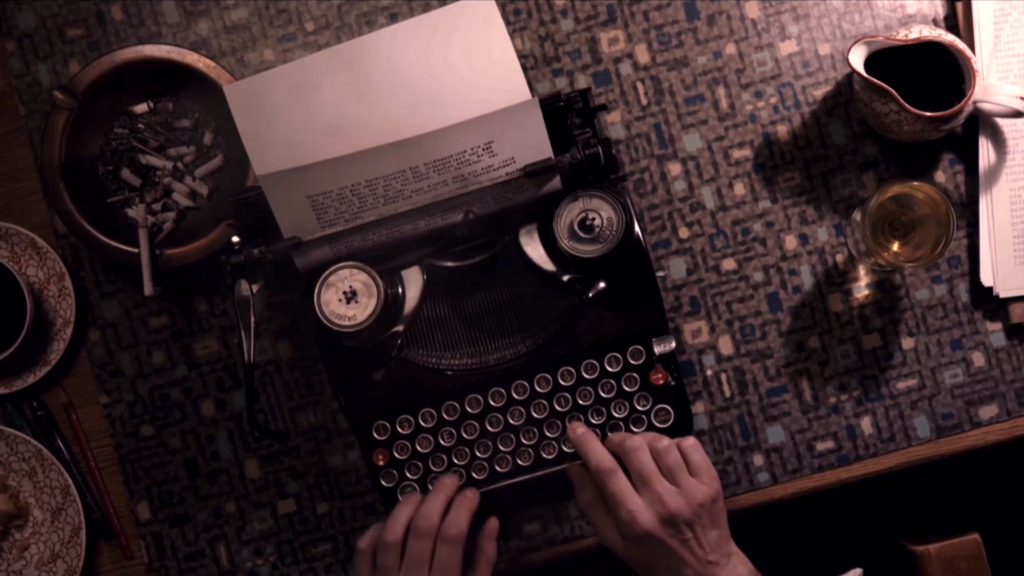
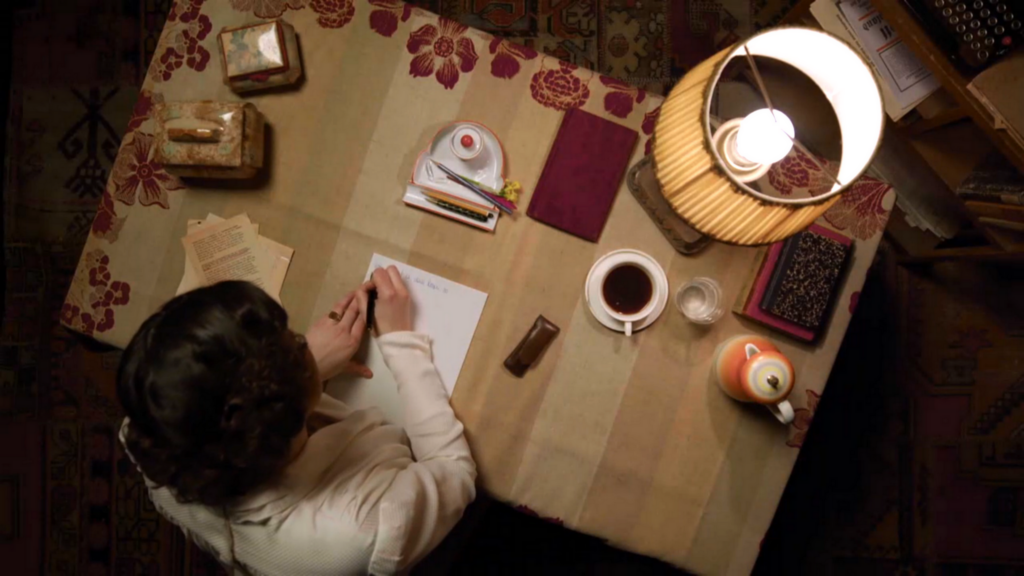
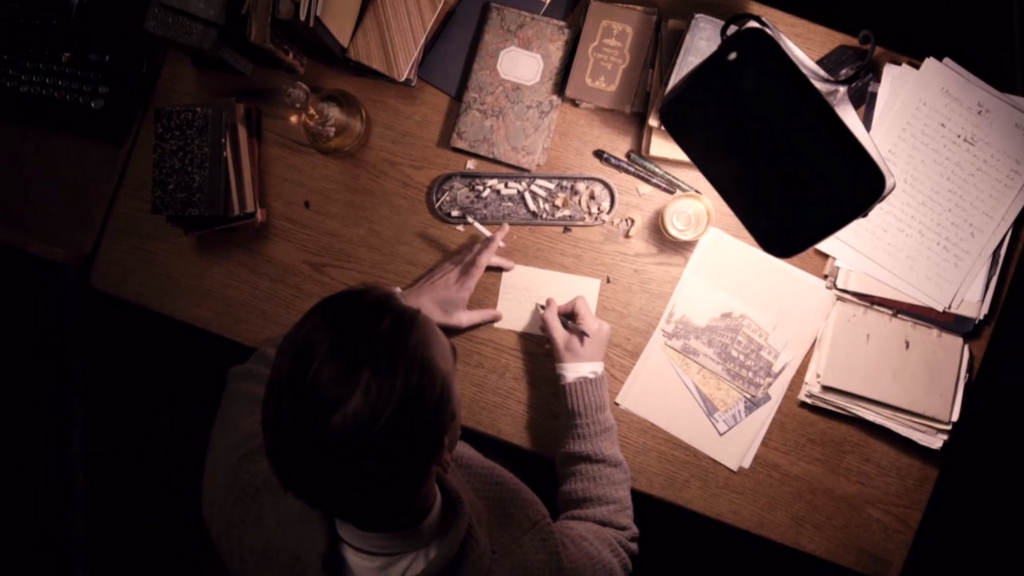
Hans Fallada is writing with a typewriter on a writing pad made of patterned linoleum, a large ashtray is already well filled, the already drunk coffee cup has been pushed aside, and a glass with a presumably alcoholic drink is ready. Next to it are the pages already written that day.
Ina Seidel’s desk, on the other hand, is neat and tidy, the tabletop is covered by a flowered tablecloth, the writing set is made of porcelain and she writes with a fountain pen. She serves coffee instead of alcohol, the books are laid out with exaggerated accuracy along the patterned edge of the tablecloth, and everything is tidy and clean.
Like Fallada, Erich Kästner smokes many cigarettes, he writes with a pencil under a modern desk lamp, and there are a few pieces of wood from sharpening in and next to the bowl, which is actually intended for pens and which he has repurposed as an ashtray. There are books, written papers, a few drawings, and also a glass and a carafe with what is probably an equally alcoholic drink.
The materials and objects do not look like old museum pieces, but rather correspond in their appearance to everyday objects that look just as they probably would have looked in the late 1930s and early 1940s.
In the first episode of the fourth season of „Babylon Berlin“ (2022) by Tom Tykwer, Achim von Borries and Hendrik Handloegten, Charlotte Ritter buys a record. The paper bag the sales clerk is holding correctly looks like a brand new bag. On the shelf behind her are records in their sleeves. However, this is not the sight of a store selling brand new goods in 1931, but rather that of a modern archive, library or museum. The sleeves are clearly very old and worn, creased and, above all, very yellowed.
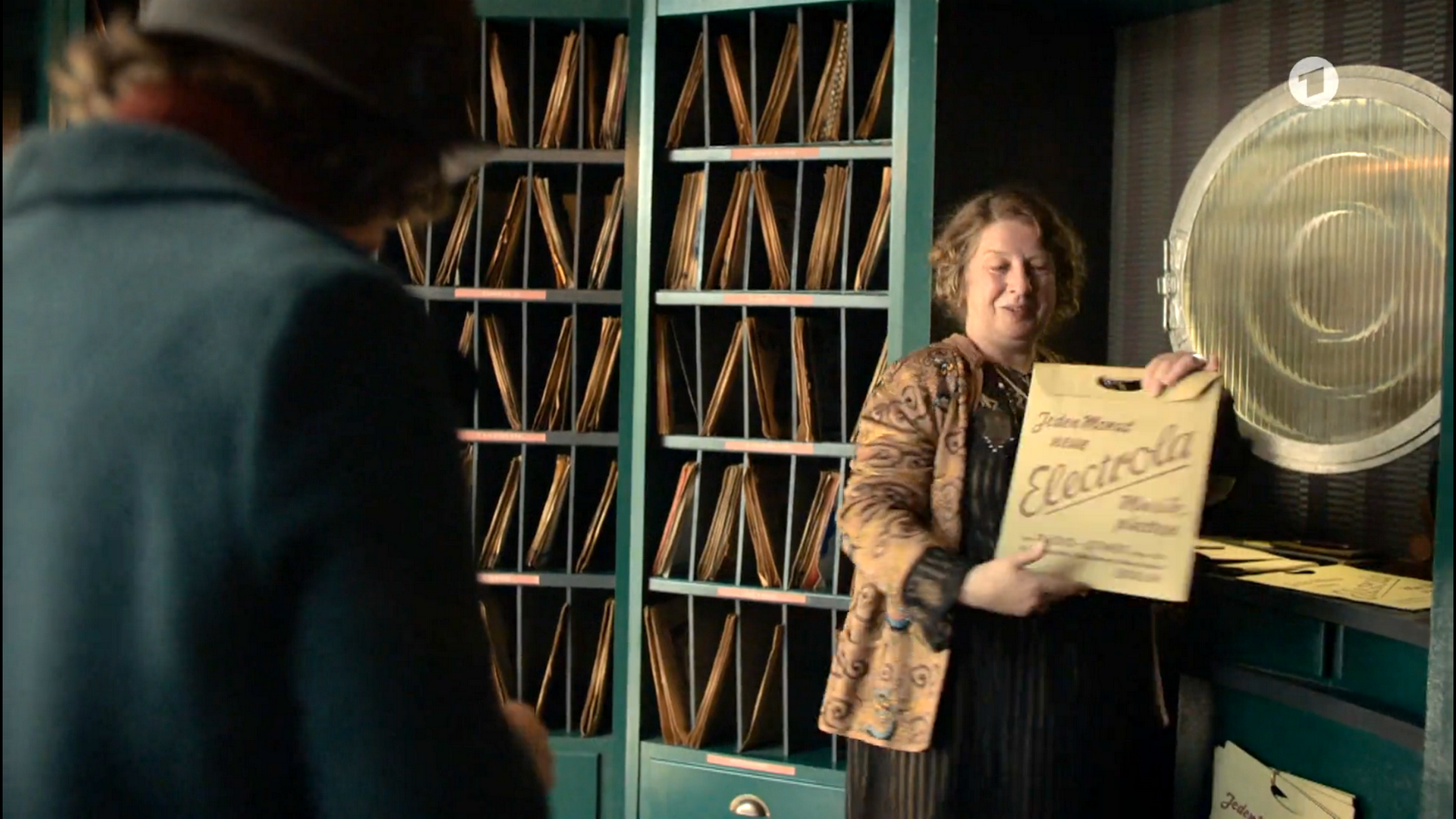
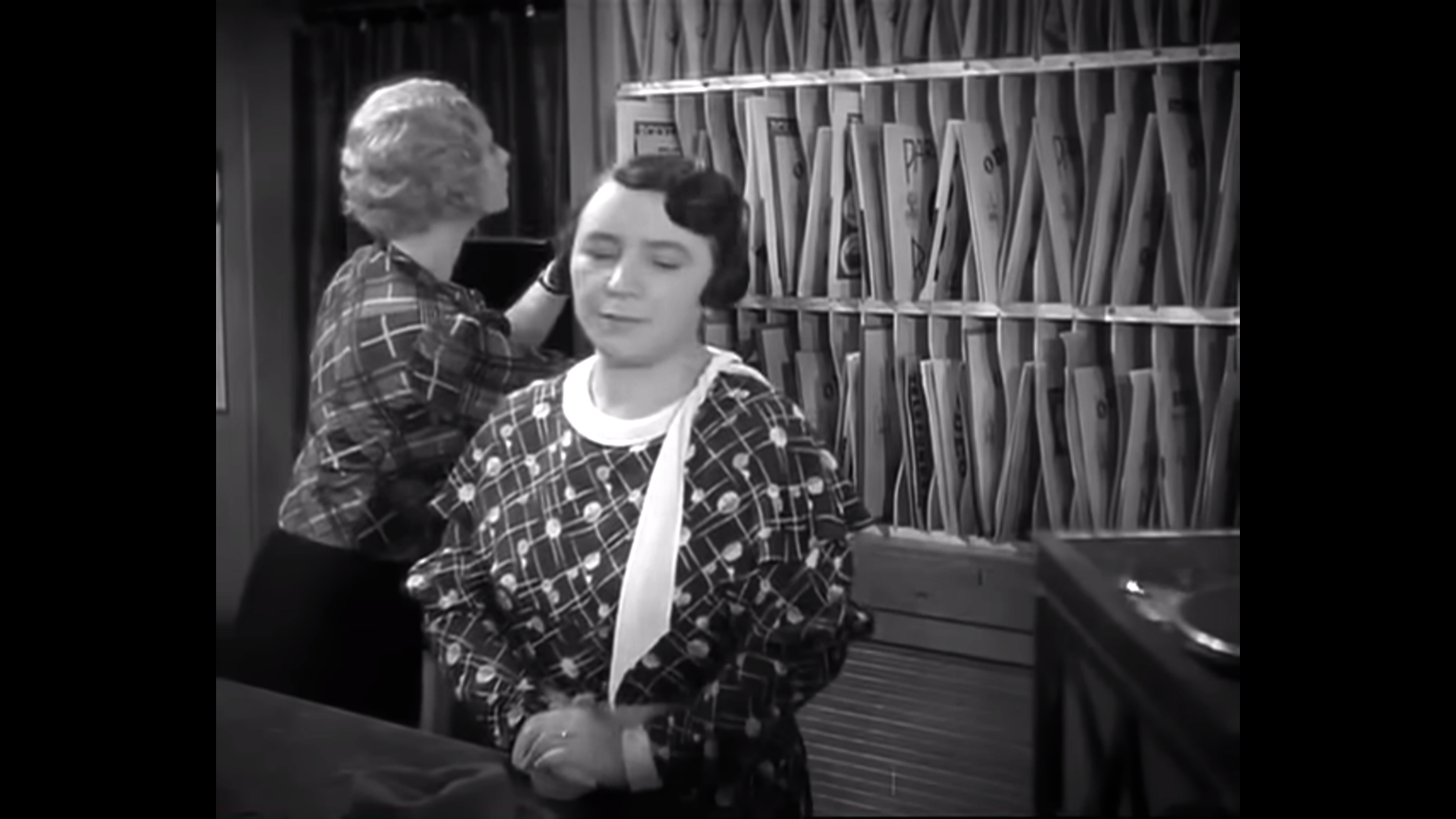
In the sketch „Im Schallplattenladen“ („In the record store“) (1934) by Hans H. Zerlett with Karl Valentin and Liesl Karlstadt, a contemporary depiction of a record store – recreated in the studio – can be seen. Despite the black and white image, it is clearly recognizable how new record sleeves looked on the shelves in the early 1930s.
The otherwise very detailed reconstruction of the store in „Babylon Berlin“ could have been made a little better and more authentic if the record sleeves had been based on facsimiles rather than originals.